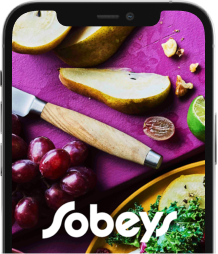Serving Size: The recommended serving for a particular food or how many servings are in the package. Don’t overlook this important part of the label – you may find that what is commonly considered one serving is in fact two or more!
Calories: A measurement of the energy you get from one serving. It’s important to consider total calories along with other label information, such as daily values of fat and sugar. Judging a product by just its calorie information is like judging a book by its cover! So keep reading to find out where the calories come from.
Fat: The combined total of saturated, polyunsaturated, monounsaturated and trans fats. Fat is a source of energy and nutrients, but too much of certain kinds of fats – like saturated and trans fats – can put you at risk for heart disease and type 2 diabetes, and both should be kept at a minimum intake level. Look instead for monounsaturated and omega 3 and 6 fats: a small amount of these fats is an important part of healthy eating.
Cholesterol: Our bodies actually make most of their own cholesterol, but we also get some from the animal products (meat, dairy) that we eat. Too much of it in your blood increases the risk for heart attack and stroke – so you should limit your cholesterol to 300 mg or less per day.
Sodium: In the right amounts, sodium helps balance the fluids in your body, but too much can cause high blood pressure and other health risks. The upper daily limit for a healthy adult is 2,300 mg. Sodium is added to many foods, as it helps flavour and preserve food – even foods you might least expect.
Carbohydrate: Carbohydrates are the main food for your muscles and brain, and provide your body with energy. Total carbs are a sum of the sugar, starch and fibre in the food.
Per cent daily value (% daily value): A scale from 0% to 100% that tells you if there is a little or a lot of a nutrient in one serving. Since the daily value is based on a 2000-calorie-per-day diet, use these numbers as a ballpark figure, as nutrition needs do vary depending on age and gender. Try to choose foods with a low % daily value of fat and sodium, and look to increase nutrients like fibre, vitamins A and C, calcium and iron.
Protein: A source of amino acid that builds, maintains and repairs tissues including muscles, bones and teeth. Plus, protein takes longer to digest in your body – so, to help you feel satisfied, try to include protein in every meal and snack.
Vitamins: Eating a wide variety of foods each day is the best way to get all the vitamins your body needs. Each vitamin is vital in its own way – for example, vitamin A helps keeps skin and eyes healthy, while vitamin C helps the body absorb iron and repairs blood, bones and tissues. A helpful cue is to think ABCD: each day, get your total daily values of vitamin A, B vitamins, your vitamins C and D, and you’re on the right path toward a healthy life.
Minerals: Getting a variety of minerals, not surprisingly, is easy when you enjoy a variety of wholesome, fresh foods at each meal. And you need your minerals! For example, calcium helps to maintain strong bones and teeth and may prevent osteoporosis, while iron helps red blood cells carry oxygen through the body.
Ingredients: Ingredients are listed in order amount from most to least. Look for products that have sugar, fat or salt closer to the end of their ingredients list – an easy way to make sure your choices are as nutritious as possible.






